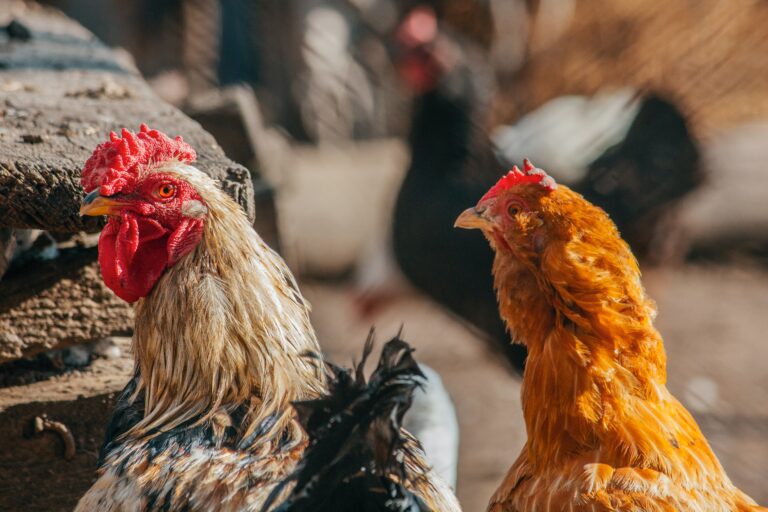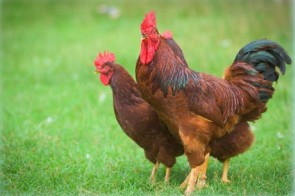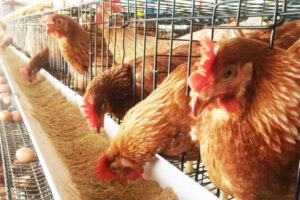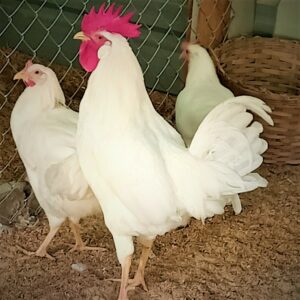How to raise chickens for eggs
(วิธีเลี้ยงไก่ไข่)

How to raise chickens for eggs (วิธีเลี้ยง ไก่ไข่)
Get to know more about laying hens before raising them. What species are there? How to feed water and food Including problems and preventive methods that should be known before raising laying hens.
Laying hens are another kind of pet that can make another income. For those who are about to turn to raising chickens and eggs. to build a career but don’t know where to start Today piggy dot com collects information on how to raise chickens and eggs for you. Basic information for newbies who want to raise laying hens. which will take you to know the species Raising laying hens with different methods of feeding – water Common problems in raising Including how to protect each other.
laying hen breed
There are 3 breeds of laying hens that Nigym raises in Thailand: Thai road hens, Thai laying hens, Department of Livestock Development. and white-horned, crested hens Each species has different strengths as follows:
1. Chicken Road Thai(ไก่โรดไทย)
Half purebred chicken, half egg Can be raised to make use of both meat and eggs. Hereditary traits are It has light brown to brown hair. brown eggshell The first egg can be laid at about 168 days of age, the egg-laying rate is 94%, the yield is about 240 eggs per year.
2. Thai laying hens, Department of Livestock Development
(ไก่ไข่ไทยกรมปศุสัตว์ )
There are traits of the species. Light brown to dark brown fur brown wing feathers dark brown necklace bright red large crest big red wattle The red earrings are slightly white. The skin and shins are yellow. The tip of the tail is black. light brown eggshell Gives the first egg at 169 days old, yields about 290 eggs per head per year.
3. Single Comb White Leghorn(ไก่ไข่เล็กฮอร์นขาวหงอนจักร)
a purebred chicken The characteristics of the breed are small, white hair, eggshell white, fertile eggs, early ovulation, start laying eggs at the age of 4 and a half months to 5 months, yielding about 300 eggs per head per year.
Choosing a breed of laying hens should be a good breed of chicken Selected as a laying hen especially and has the same characteristics as the breed of laying hens It comes from a farm that is reliable and standardized. It has a high survival rate, is strong and can withstand the Thai environment well. It should also have high yields, resistant eggs, large eggs and thick shells. It is important to inquire from other farmers to compare the data before making a decision.
Planning before raising laying hens (การวางแผนก่อนเลี้ยงไก่ไข่)
Should start planning for raising 10-20 laying hens and gradually increase the number to study various behaviors, including feeding. upcoming disease including finding ways to prevent and care In the meantime, the area should be set up for growing vegetables, such as bananas, rice and vegetable gardens. It is used as a supplement and the main feed for chickens.
Different methods of raising chickens for eggs(วิธีเลี้งไก่ไข่แบบต่างๆ )
Free-range laying hens
Raising chickens that let the chickens come out of the house or outside the pen freely and lived a natural life It is a method of raising laying hens that is very popular today. Because it will make the chickens in a good mood, happy and healthy. It is good for the yield. This gives the yolk a distinctive dark color. clear egg white When used in cooking, it has a nice aroma, good taste and higher nutritional value. Suitable for breeding laying hens of the Thai road breed,
Thai bar chicken, Thai Plymouth Rock chicken. and laying hens, Department of Livestock Development Because they can find their own food naturally and withstand the environment. Breeding areas should be located away from shelters such as gardens or open grassy courtyards. This is an area where no chemicals have been used for at least 3 years and the soil quality should be checked to see that there are no chemical or heavy metal contaminants. The rate of grass area 5 square meters per 1 laying hen
Poultry farming
The laying hen house must be strong, durable, windproof, sun-proof, rain-proof, including other animals such as birds, cats, mice and dogs, easy to clean. Stay away from the community to prevent bad smells. The structure should be concrete. There should be padding material such as rice husk 3-5 inches thick and should have 1 nest per 4 hens and 2 entrance-exit doors to circulate and release the chickens to the independent plot. If there is more than 1 house, each house should be spaced apart. more than 10 meters to provide good ventilation and prevent the spread of disease
watering and feeding chickens (การให้น้ำและอาหารไก่ )
There are 4 types of laying hen food: compound feed, feed feed, pellet feed or instant feed. and dietary supplements For laying hens 5 months of age and older, about half a liter of water should be given per day. If the chicken is dehydrated during the laying period will make small eggs The water provided should be clean. no germs Put it in a cylinder or bucket for the chickens to eat.
problems and prevention
The problem of raising laying hens to be aware of is disease outbreaks caused by viruses and bacteria such as Newcastle disease. contagious bronchitis chicken cholera and chicken pox This can be prevented by vaccinating the chickens according to their age and vaccinating them regularly. Because each type of vaccine has a different protection period.
ขอบคุณข้อมูล :: สำนักงานปศุสัตว์จังหวัดพิจิตร
How to raise chickens for eggs
(วิธีเลี้ยงไก่ไข่ )

How to raise chickens for eggs (วิธีเลี้ยง ไก่ไข่)
Get to know more about laying hens before raising them. What species are there? How to feed water and food Including problems and preventive methods that should be known before raising laying hens.
Laying hens are another kind of pet that can make another income. For those who are about to turn to raising chickens and eggs. to build a career but don’t know where to start Today piggy dot com collects information on how to raise chickens and eggs for you. Basic information for newbies who want to raise laying hens. which will take you to know the species Raising laying hens with different methods of feeding – water Common problems in raising Including how to protect each other.
laying hen breed
There are 3 breeds of laying hens that Nigym raises in Thailand: Thai road hens, Thai laying hens, Department of Livestock Development. and white-horned, crested hens Each species has different strengths as follows:
1. Chicken Road Thai(ไก่โรดไทย)
Half purebred chicken, half egg Can be raised to make use of both meat and eggs. Hereditary traits are It has light brown to brown hair. brown eggshell The first egg can be laid at about 168 days of age, the egg-laying rate is 94%, the yield is about 240 eggs per year.
2. Thai laying hens, Department of Livestock Development(ไก่ไข่ไทยกรมปศุสัตว์ )
There are traits of the species. Light brown to dark brown fur brown wing feathers dark brown necklace bright red large crest big red wattle The red earrings are slightly white. The skin and shins are yellow. The tip of the tail is black. light brown eggshell Gives the first egg at 169 days old, yields about 290 eggs per head per year.
3. Single Comb White Leghorn(ไก่ไข่เล็กฮอร์นขาวหงอนจักร)













